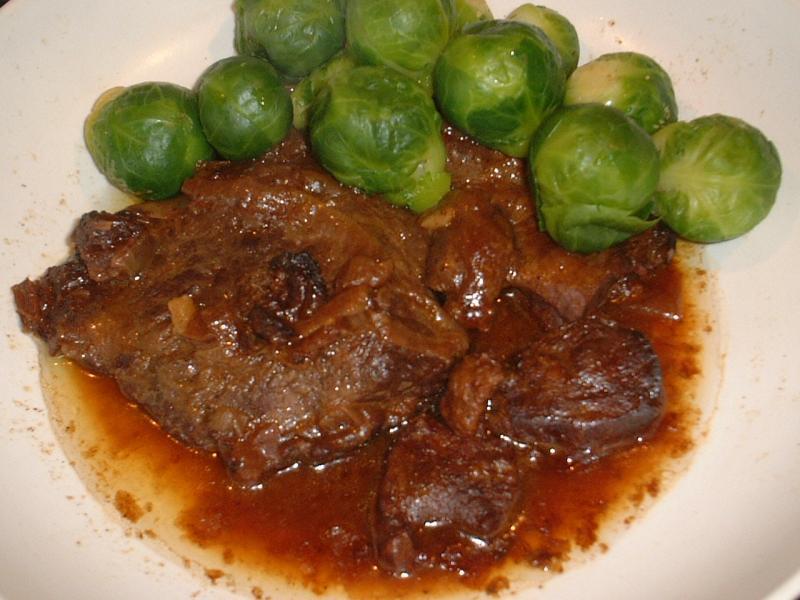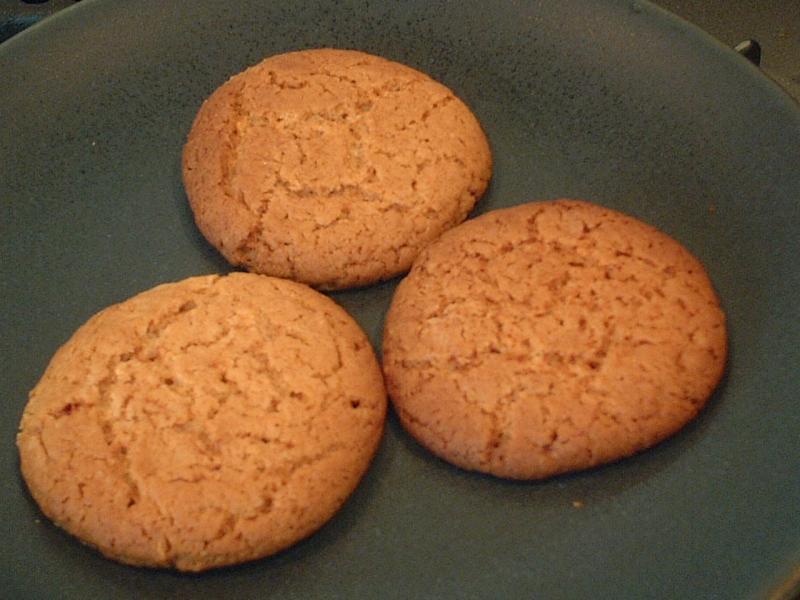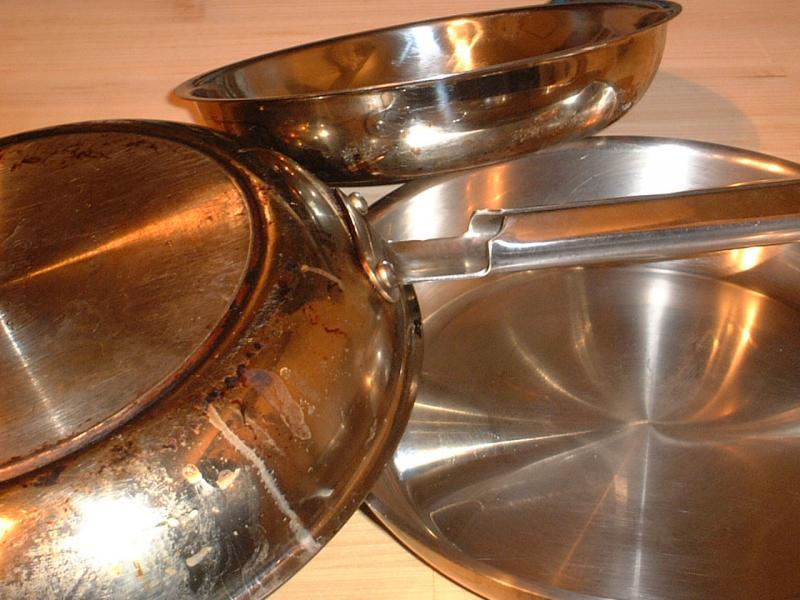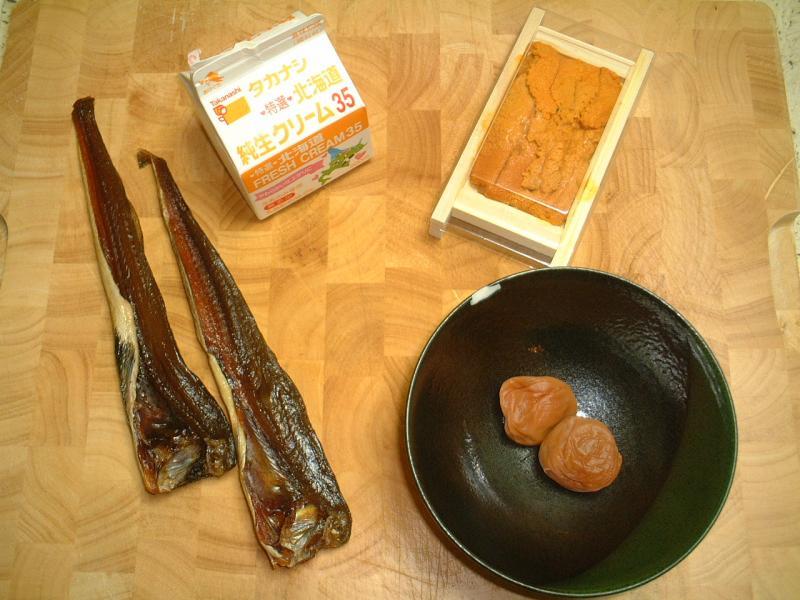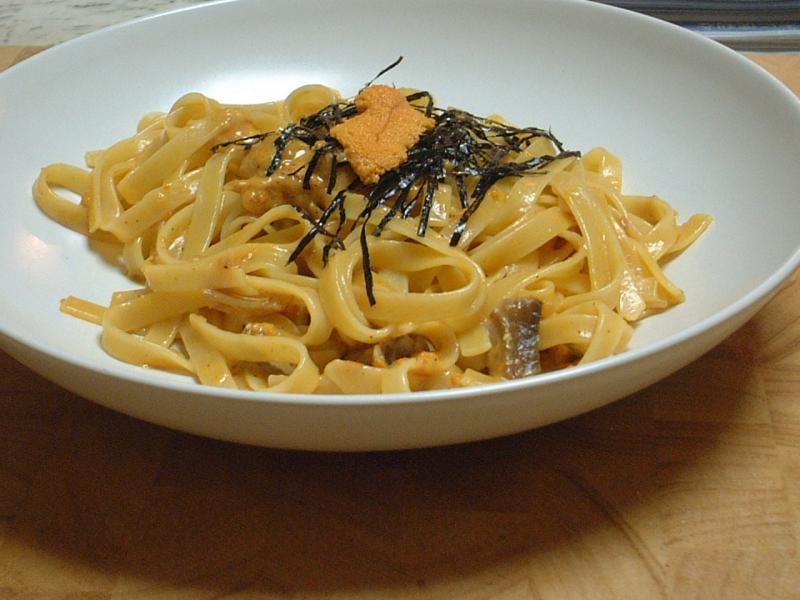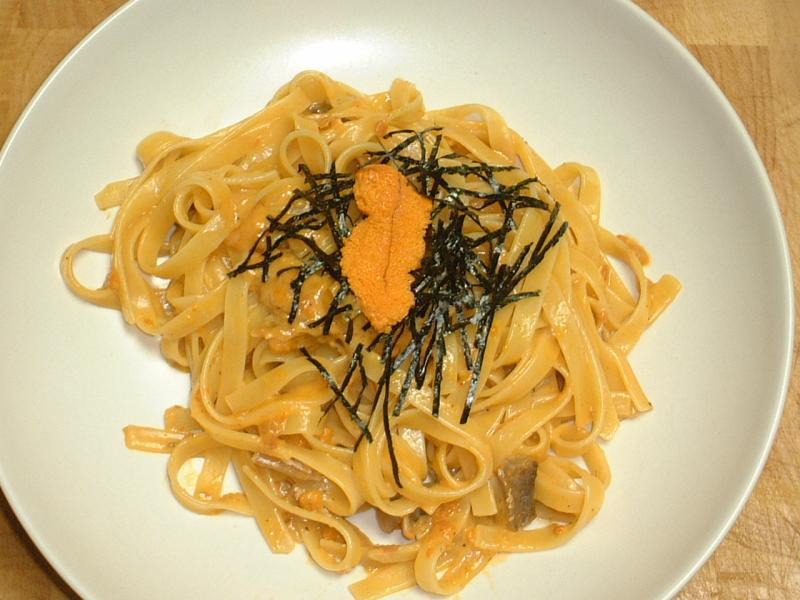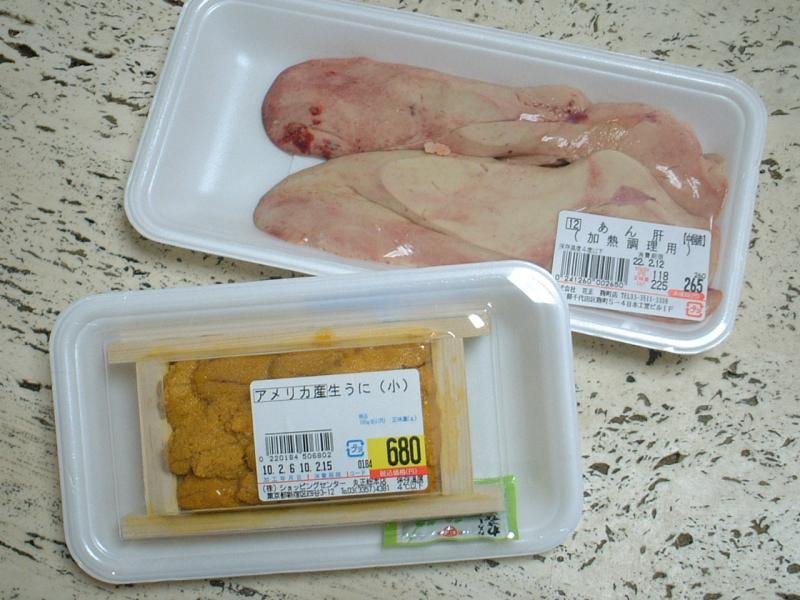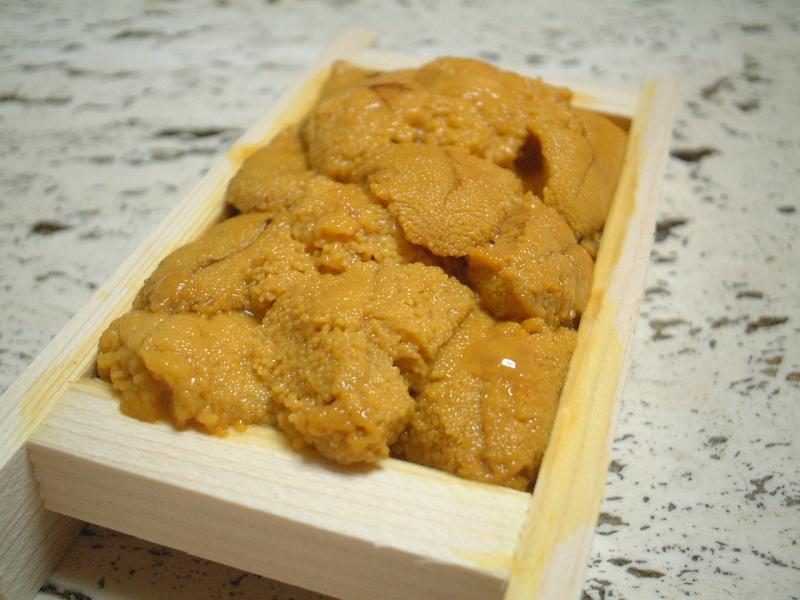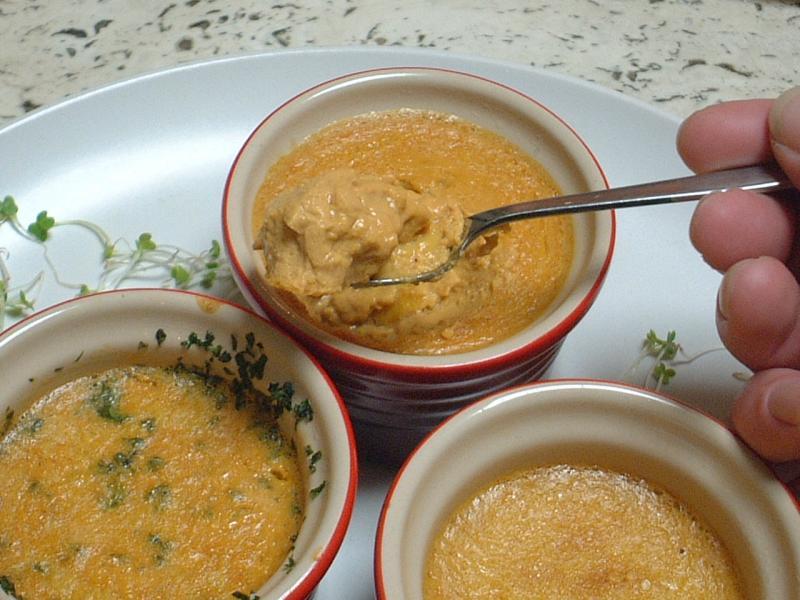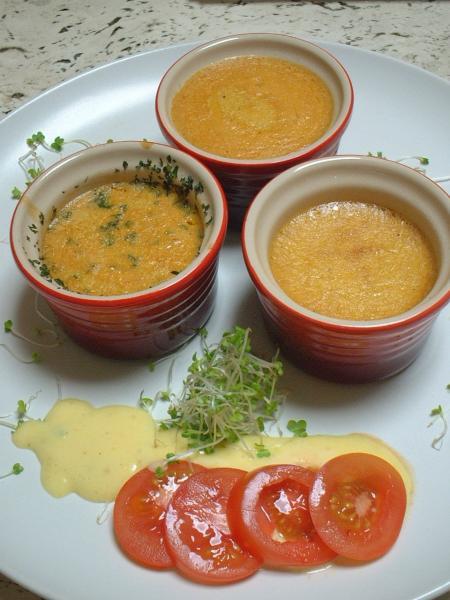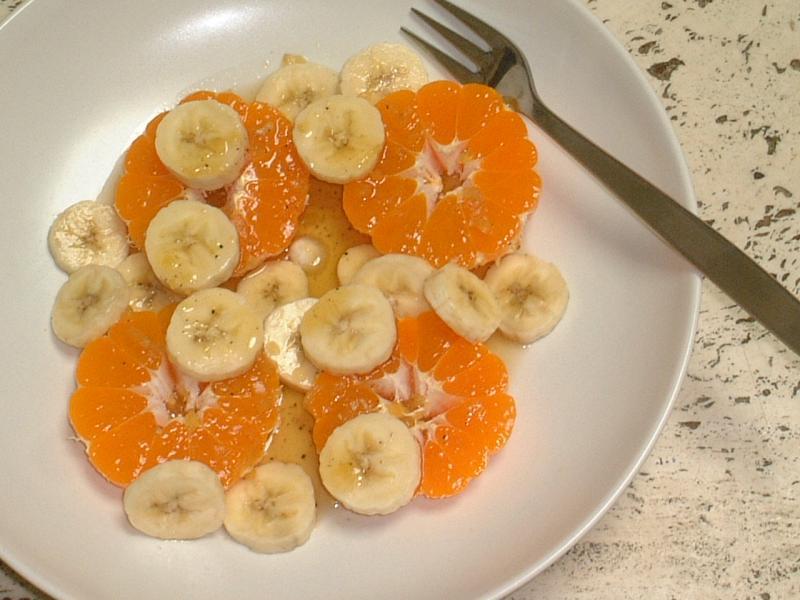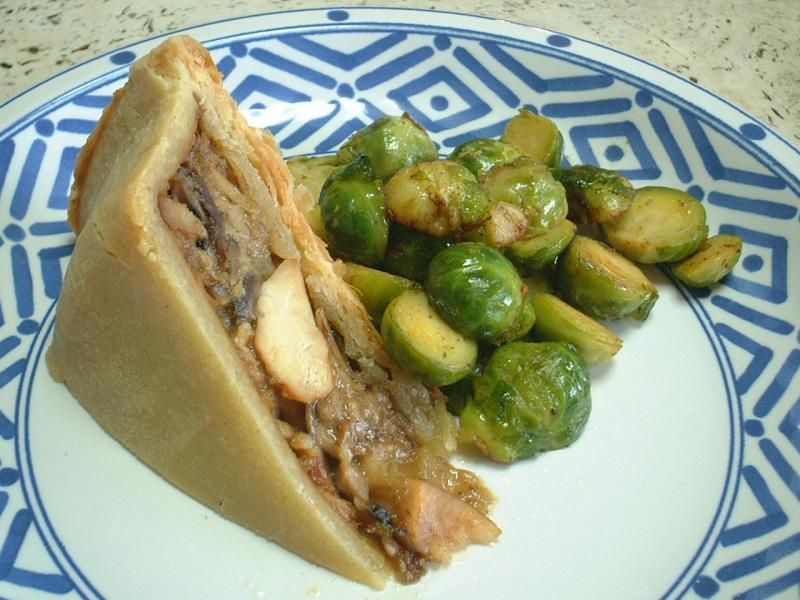-
Posts
1,728 -
Joined
-
Last visited
Content Type
Profiles
Forums
Store
Help Articles
Everything posted by Blether
-
I make what I like to think are fairly authentic Indian dishes, following Pat Chapman (not his restaurant curries book), Mad Jaffrey and Julie Sahni, as well as diverse sources on the net. I do make a 'mild curry powder' from whole spices and store it as a long-lasting paste. At its most basic, curry powder is cumin + coriander + chilli. Different commercial brands are blended to different formulas, and can taste very different. As I understand it, India doesn't typically use 'curry powder', but as has been mentioned, does use 'sambar powder', 'tandoori masala', 'meat curry masala', 'biryani masala' and so on, where 'masala' means mixture. There are many varieties, but these are all curry powders. Garam Masala ('hot mixture') is another spice mixture that Indian cooks keep on hand - it's yet another blend of spices, a particularly perishable one. I follow Madhur Jaffrey's recipe for this, using black pepper, nutmeg, cinnamon, clove, cardamom seeds picked out of their husks, and a little cumin, making up a little at a time. (If you buy it commercially you typically get a mixture bulked out with cumin and/or coriander). I have one recipe for tandoori chicken from Atul Kochar, chef at the time of Tamarind in London's Mayfair, which uses garam masala. I use my curry powder in recipes where it's augmented by other spices, and very occasionally to make up a quick-and-dirty curry on its own, using however much garlic, ginger, hot spice and onion I feel like that day and varying it with yoghurt or cream or coconut. It also makes a background flavour in my standard tandoori chicken which also uses ginger, garlic, fresh chilli, lemon juice and a lot of paprika (Atul Kochar's is good but a bit rarefied). I don't see curry powder as a dirty secret. I believe it's a mistake to see it as the beginning and end of Indian food, or to rely on it too heavily. Just as constantly using the same stock cubes will make all your soups taste the same, curry powder / curry paste is something not to over-do. but used sparingly is a worthwhile kitchen staple.
-
I've used sharp cheddar as standard in mornay-based gratins for years. It can go grainy if you put the cheese into the bechamel too early - so that it's in there during the simmer. You can also get a bechamel to go grainy by simmering too fiercely and/or not stirring enough during the simmer. My grandmother (sorry !) used to make a variation on macaroni cheese (starting with bechamel) using some vinegar (a tbsp for a family-size dish ? who knows) when she mixed it all together, that ended up extremely grainy, on purpose. Didn't Marcella Hazan say that the beauty of parmesan is that it melts with absolutely no stringiness ?
-
I keep bread ends and remains in one bag in the freezer, and turn them into crumb as a batch when the other bag (of crumbs) gets low. The bread is part fresh and part slightly stale. I don't dry it out before or after crumbing: just tear it into maybe 6 or 8 pieces per slice, and blitz a slice or so at a time in the cup blender / liquidiser. In "Things you'd be crazy not to make yourself" we had a discussion about Japanese panko. I posted this link to a page at Frystar that shows the panko-making process. They bake Chorleywood-process bread, leave it to sit for some time, crumb it and then pack it (for fresh) or dry out and pack it (for dry).
-
I agree with Shalmanese that it sounds like water from the sprouts. Another option is to cook the veg fully, cover with the hot sauce and just grill (broil) to finish.
-
Wine-braised steak, reheated in the bowl it was served in, hence the splatter, and served with breadmaker white: 3.5lb of (middle ?) rump, 2 onions, 3 or 4 oz of cooking fat (lard and a little butter), ~11 grams salt, pepper, a tablespoon or two of flour, half bottle of white wine. The beef fat chopped and rendered; the meat sliced into steaks, salted overnight, browned and set on the sliced onion in a baking dish, along with the cracklings; flour stirred in to the browning pan then the wine added all at once, gravy style, to thicken and to deglaze at the same time. Braised at 170C (325F ?) for 2 hours covered, then 30 minutes open. A really good browned beef flavour in the sauce. Mgaretz, nice stew and I wish it was easier to get chuck around here Gingernuts made do as dessert and as an almost-abstract composition:
-
Roasted parsnips are another thought. Then there's a winter green gradation - a few florets of broccoli dressed with the smallest amount of oil and some lemon juice, a couple of slices of braised fennel, and at the white end, parsnip ? Leeks will either fit as a link to the turnover, or be too much in the same meal. Once you have some crunchy vegetable, you could even puree the parsnip - serve the meat on a little parsnip puree, drizzle with red wine / stock reduction - or bring the wine reduction and parsnip puree together ? Parsnip gives a nice sweetness as a third element with the rich meat & a sour-dressed veg - and it's always such a great flavour with beef.
-
Well you're serving Beef Wellington... so dessert has to be crystallised oranges spiked with Grand Marnier, and brandysnaps. So good, so 70's... eta: crystallised by which I mean caramelised.
-
A friend brought me back saffron from Spain. I've only used it a handful (!) of times and I've just pinched. Like ScoopKW says, you quickly find out its strength. Where I am, at least, the cheapest saffron available is from Indian or Pakistani-owned places selling spices by mail order. Most spices tend to be 1/4 or 1/5 of the supermarket price, and the saffron (last time I looked) was 35 bucks or so against an average 50.
-

Real Authentic Thai Food in Phuket? Where?
Blether replied to a topic in Elsewhere in Asia/Pacific: Dining
A lot of places in Phuket town - those look good. You've got me intrigued now, to hear how your experience goes. I haven't sought out local muslim food there. I thought Khan Baba at the Kata centre intersection served good food, but that's sub-continent muslim, and if I'm right Hong Kong spoils you for choice in that area. Good luck with your trip, and if you have time, please post back to say how it went. -

Real Authentic Thai Food in Phuket? Where?
Blether replied to a topic in Elsewhere in Asia/Pacific: Dining
Rick, there are people on eGullet who know Phuket better than I do. Maybe you'll get more responses. Another Thai restaurant to look out for is Ruean Thai in Nai Harn. I've been meaning to eat there but so far have only looked at the menu. I expect good food, and it's a relatively quiet place with pleasant outdoor seating. At the south end of Kata beach, Kata Mama does not mid-range but basic, good Thai food. Kata BBQ next door (previously 'Gung') is a level up, price-and-sophistication-wise. These are places you'd try if you're in the area, not so much destination food. Other than Thai, I was surprised at how good the food at trattoria Il Capriccio, right on the main tourist drag in Kata, is. Near Laguna, if you like a very good grill restaurant, American-owned The Siam Supper Club is one - it was good, then a few years ago it slipped, and now it's back. But drop by once before you decide to turn up as a family. -
Some confusion there, maybe, between pommes de t dauphine (seasoned mash mixed with egg & fried as croquettes - very a la minute) and gratin dauphinois (sliced, baked in cream). Personally I think the pastry gives a good opportunity to get away from potato hegemony, and I like something green with Beef Wellington. In this season, endive ? Leek ? Cabbage ? Elizabeth David gives a French recipe for leeks in red wine, if you're intent on the wine. Port or Madeira also make a complementary sauce. Beef Wellington's a lot of work. There's good reason to keep the sides simple - I love sprouts so find it easy to agree with that idea. They're not everyone's cup of tea. What other courses will you serve ? Are you holding off the decision till you've finalised the main plate ? ETA: I also like leeks cooked to remain a little crunchy, and dressed like a hot salad, Italian style, with oil & vinegar. Something to cut the richness.
-
Thanks for making such a full reply. :-) My Carbontastic 1200 gas stovetop here has a smaller burner (measuring carefully) of 7.5cm. The lowest flame, with the pan on it, covers 8 and a bit. My smallest saucepan is 13.5cm, with a 12cm disk. The same burner at full blast nicely covers the 21cm disk on my 23.5cm saute pan. It's more than 20 years since I cooked on electricity, but those spiral elements used happily to get cherry-red-hot. I'd be wary of that heat close below the thin steel wall of the turn of my disk-bottomed pans. I'd fear burning of the contents there. I happily caramelise sugar in my disk-bottom pans, keeping the flame within the disk. Yes, the frypans I grew up with in the UK all had the straight-line sloping sides, so I can sympathise with an instinctual response that says, "that's not a frypan". It seemed that curved sides were a French thing. Why is it good to heat up the sides of the frypan ? I don't balance food on there to try and cook it. I can see a bigger area of core-heated surface being useful, but I'd rather have it in a bigger disk bottom, than running up the sides where it's hard to use - copper being expensive and all. I gave in to curve-sided frypans as part of a set of copper-disk-bottomed pans. And I've found the curved sides to be great for frying stuff like onions or mushrooms or both, or any kind of battuto, because they make the jolt-the-pan-forwards-to-toss-the-contents manoeuvre easy/possible. For something like an omelette (for those of us who don't have a dedicated pan), I don't want to apply the same heat round the corners where the egg is shallow, or I'm going to end up with something rubber-rimmed like an early experiment by Dunlop. Yeah. I've seen you write this a number of times, and I'm going to call shenanigans on it: "Shenanigans". (Is that how you do it ? I only know what I learn from South Park and The Simpsons). The steam at over 100C, finding itself over a 170C pool of oil and a 170C pan in a 20C kichen, has such a hard time finding somewhere to go that it needs relief from pressure at the sides ?! That steam is going straight up, with the proviso that there might be an eddy over the cooler surface of a big piece of food like a steak, a chop or a fish fillet. Do you really think the steam needs sloping pan sides so it can get out ? Have you tried a side-by-side test ? Decent, cheap disk-bottom frypans, today The inverted one is tired non-stick; the two stainless-lined jobs never see soap. The small one I seem to use mostly for frying clean eggs to serve with bacon from the non-stick. Anyhow, all copper-disk-bottomed, and all very satisfactory in use: even, responsive, comfortable. I don't own and have never owned a reduction pan. All else being equal, once again I'd sooner deploy the same amount of core metal in a flat disk. I guess the idea of the reduction pan itself is that greater surface area (of the liquid) gives greater evaporation. I can see that makes a significant difference for ambient-temperature evaporation. Over high applied heat, the equation once the contents are boiling has to be heat in = (heat used in evaporation) + (heat lost through radiation from the pan) + (heat lost through radiation from the surface of the contents). What difference does the reduction pan shape makes vis-a-vis a straight-sided pan, and how much difference ? I don't know. Gut feeling (and it's wrong sometimes, I know) tells me there can't be much if anything in it, and even that a straight-sided, disk bottom design may in fact be better. So I'm going against a century or more of culinary tradition. Isn't precise temperature control a question of heat-conducting material (let's call it HCM) and its thickness, rather than disk v clad ? Once again, I can't see that putting all the heat in through the pan bottom, given the same amount and thickness of HCM, is worse than putting the same amount of heat in from the sides as well as the bottom. I can see why you like a rounded side for stirring a sauce, though I don't find I have any trouble myself, with disk-bottom pan, straight sides and straight-edge wooden spoon / spatula. Lastly, stepping back one post, "straight gauge" to me means 'constant thickness', so as you say, applying equally to a plain copper pan with the same thickness in bottom and sides, and to a 'clad' pan with the same thicknesses of core and inner and outer sheath in bottom and sides (and to a plain aluminium pan with etc.). I don't think casting restricts the manufacturer from varying the thickness from bottom to sides. I haven't checked, but I wonder if Le Creuset's pots are in fact straight gauge ? I know I've come across some cast iron ware that wasn't uniform (the bottom being thicker than the sides). Is All-clad in fact normally the same thickness in the sides as in the bottom ? Likewise, you might loosely include enamelled cast iron as 'clad', but what were you going to do without the iron core ? Make a pot from enamel ? I'd be wary of extending the use of 'clad' that far.
-
Yes, 680yen. The tray for the pasta was the same size but reduced to 480yen - they were reduced through being a bit raggedy-looking (I picked the best one that was left). 680yen has been pretty much the standard supermarket price here for this size tray for years now, certainly at my local ones. More than ten years ? I weighed the uni off the tray so I could formulate the mousseline right - there were 70 grams, all told - a scant two-and-a-half ounces. The funny thing is (I know you'll be laughing merrily) both these trays were marked アメリカ産 amerika-san, 'produced in America'. The next most common source is Chile. At your prices... ouch ! How far are you from the sea, Percy ? They're not that hard to pry from the rocks, break open or wash out under a tap or in the sea.
-
The memory got clearer - family meals also involved shallow frying. You got battered fish from the chippy; at home it was breaded and shallow-fried.
-
Hi, Sam. First of all, respect to you for writing the eG book - the eGCI course - on cookware. I think we're happy enough that we're talking about encapsulated-disk-bottom pans on the one hand, compared with All-clad and its imitators on the other. Worst of all, though, I simply can't agree with you that - except that if by smaller saucepans you mean less than 12cm across (small gas ring flame width, in this country at any rate) - and even then I can't see why you say particularly gas rather than electricity. Frypans and reduction pans ? No
-
Maybe the most practical suggestion is 'hold in a low oven' - but 20 minutes is never going to be good. Timing wise, fish & chips at home has problems - for family eating, we always served a maximum of two people at once. Nor have I ever paid any heed to keeping the chips out of the fish fat. If you cared about it you'd need to be keeping two batches of oil - one for seafood and one for chips / neutral tastes (then another for chicken, say, if it was part of your regular menu). Who can afford to throw out oil after one meal ? I agree that two cookings for the chips are a good idea - though speaking for myself, I usually par-boil or par-steam before frying, and fry as soon as the first cooking is done so there's no heat loss. If it's frozen chips, they get fried twice. In general, I'll hold the finished chips (in the oven as above, on the serving plates) then fry the fish. Fish fries quicker than chips, in typical cuts.
-
It's still winter today, and there are, err, plenty more fish in the sea. Bruce, I too think your carbonara is beautiful, and you've given me the perfect lead-in for somthing I've been threatening to do for a long time, 'unibonara' - replacing the cheese with uni, and the pancetta/bacon with smoked fish: The other flavours are tsubure (soft) umeboshi (the milder honey-cured variety) - that would be lemon juice and salt if unavailable; a teaspoon of grated parmesan per person; white wine; salt, pepper and of course garlic. Japan is not good for smoked fish. I picked up these smoked and (mercilessly) dried hokke from Yoshiike supermarket at Okachimachi. They're so tough I soaked them first in the wine for half an hour, and they're sweet - I might have gained by knowing at the shop that the characters for sweet, 甘 ama and grass, 草 kusa combined read 'kanzou' and mean licorice, but the only alternative available anyway was fatty smoked salmon belly. I went with it and it worked, though surely better options exist. The garnish is of course a piece of uni, with kizami nori - julienned nori. The nori wilts too fast and I don't think I'd do that again - better Italian or ordinary parsley, or in Japan some mizuna or similar. The flavour, though, is utterly fantastic - you can take that to the bank.
-
My take is that on gas, you regulate the flame to stay within the bottom disc - if you need a bigger flame, you need a bigger pan (even with a clad pan, there's a limit to how much more heat you can put in by running the flame to or round the very edge). An electric ring gives you less control of the width (diameter) of the heat source, when you use a small pan. A clad pan will fare better with an inevitable heat overlap. Disc bottoms solve the baby-sitting problem just as well as clad pans.
-
And the edit option's expired ! I can see the point of clad cookware for an electric stove, and for cats. Otherwise, I can't.
-
500 bucks ? You could buy 10 or 15 of the 10" knives from this range. Like your Wusthofs, they'll need more steeling than the Japanese blades, but whilst they'll roll, they'll not chip so readily. You could keep 5 sharpened for chopping, 5 for pull cutting and five for bone-hacking - or just have one for each purpose and eat steak for dinner every week for a year. ETA: and if you sharpen the rear of the blade for bone-hacking, that's one less, and steak and truffles on your birthday, too.
-
You certainly won't be thought badly of for not giving them anything (unless they've done some exceptional service that you haven't yet acknowledged). As long as your comfortable with it, though, no sweat. I would try to make the present on the second-last visit or the one before. That way, you don't leave them feeling obligated - if they want to give something in return, they can do that without a lot of trouble.
-
Great-looking teriyaki, David. Kim, I love your beef & vegetable soup. I tried making winter seafood terrines with uni and ankimo (monkfish liver): (uni porn): This is the first time I've cooked ankimo, 'the foie gras of the sea'. I used a standard mousseline for the terrines, and used the egg yolks in a lemony mayonnaise. I planned to make separate uni and ankimo mixtures, and fold the (small volume) uni into the ankimo for a 'ripple ice cream' effect. I was surprised when the ankimo blended down to a vivid coral pink rather than the beige I'd expected. In the end there's not much colour contrast, and I made one pure uni terrine (bottom right here) and the rest (two shown here) ankimo with a barely-visible swirl of uni. Bottom left, this one thought it would be able to release from the terrine if the oil-brushing was coated with parsley. It was wrong. Conclusion: ankimo's a powerful flavour to serve this way. Seasoning ? Portion sizes ? Accents in an ordinary fish terrine ? A work in progress. On the uni side, well, you can't beat good uni, nor at that price should you able to. Dessert: Seasonal Mikkabi mikan (mandarin oranges from central Japan) and unseasonal bananas, with ginger-honey syrup and black pepper.
-
First of all, function. Almost ten years ago, before I joined eGullet, I read somewhere (here ? A Cook's Wares dot com) that for even heat distribution in the sizes of typical kitchenware, IIRC you need a 2mm thickness of copper, or a 5mm thickness of aluminium. Copper and Aluminium, in that order, are the most conductive metals that are practical for cookware. As well as spreading heat evenly, conductivity means they will respond more quickly to changes in the heat you're applying to them. A stainless pan with a 2mm copper base is lighter than the same pan with a 5mm Aluminium base; all-copper pans are heavy. I like stainless steel best as a cooking surface. I understand that Aluminium is softer so scratches more easily; it also reacts more readily with acids. I can see the point of clad cookware for an electric stove. Otherwise, I can't. Do you have a saute pan already ? I hadn't used one or dreamed of doing so, but got one (that I thought I could always chuck) when I bought a cookware set. It's now one of my favourite pans, for having a wide cooking surface (more so than a frypan), higher sides to stop splatter, and plenty of volume (again, much more than a frypan). Functionally, that covers the optimums. It's been pointed out on eG before that high-end restaurants are often producing high-end food on basic, bulk-buy pans. Second, fashion. In the first place, the cost of heavy advertising will account for maybe 7% - 15% of a product's selling price. Then, as with so many other products, you can pay more and more, and all the gains are intangible - cachet, feeling, satisfaction. Maybe there are social benefits in owning the same thing as certain other people. How you value these things is a personal decision.
-
I like the sound of coffee and orange. Don't the Italians load a bowl of iced expresso with orange and some kind of spirit as a group refresher ? I thought it was called granita, but have since read many non-alcoholic recipes for the same. I think yoghurt's an option on the acid side. So dilute coffee liqueur with lassi (450ml plain yoghurt / 100ml water) - a "Dusky Lassie" - and serve over ice. Cardamom accent optional. (Putting lassi behind your cocktail bar opens up a rich seam of tedious puns - mix with Glayva, Drambuie or whisky for a Highland Lassie, etc).
-
Chicken pie as seen in "Dinner", re-warmed in the microwave. Sprouts tossed in yesterday's bacon pan - cooked, seasoned and dressed in one.


